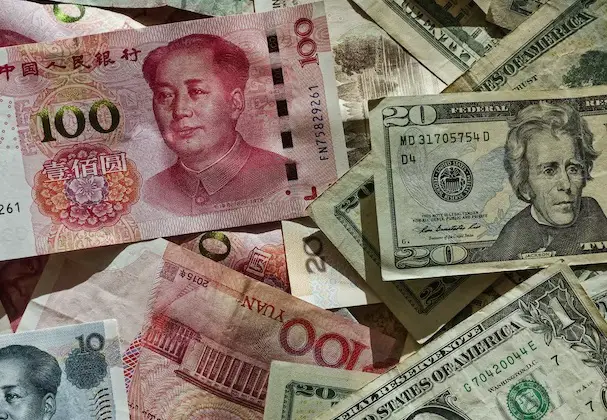On Monday, Kommersant, the Russian business news outlet reported that the Chinese yuan has overtaken the US dollar as the most traded currency on the Russian stock market for the first time ever.
The outlet reported that according to its estimates, data from the Moscow Exchange (MOEX) showed that the yuan had displaced the dollar in February as the most traded currency.
Over the month, the statistics showed that the volume of Chinese currency trading exceeded 1.48 trillion rubles ($19.6 billion), which was an increase of about a third from January. While the volume of dollar transactions increased in January as well, it only increased 8% to 1.42 trillion rubles ($18.8 billion). This meant the yuan accounted for nearly 40% of the total volume of trading in major currencies, while the dollar accounted for just over 38%, and the euro had 21.2%.
One year ago, the dollar accounted for 87.6% of trading volume, the euro was at 11.9%, and the yuan was only at 0.32%.
Kommersant wrote the decline in the dollar’s dominance reflected Russia’s withdrawal from transactions in “unfriendly” currencies as the US and EU increasingly apply ever more restrictive sanctions on the nation.
At the same time, customs data from China showed that over the past year, trade turnover between Moscow and Beijing increased by 29.3%, exceeding $190 billion. According to chief analyst at Sovcombank Mikhail Vasilyev, roughly half of Russia’s trade turnover with China is performed in rubles and yuan.
Vasilyev said to Kommersant, “Some large Russian companies have already completely switched to trading in yuan with China, some still maintain the parity of the Chinese currency with the dollar. We expect that the share of national currencies used in trade with China will increase in the coming months.”
Vasilyev went on to explain, “The continuing risks of Western sanctions on the Moscow Exchange and the National Clearing Center, as well as the de-dollarization policy pursued by the Bank of Russia, also contribute to the decline in demand for the currency of unfriendly countries.”
Kommersant noted, the dollar is still dominant in MOEX’s trading with “today’s” settlements. It has a trading indicator of 0.74 trillion rubles ($9.8 billion), followed by the euro with a trading indicator of 0.5 trillion rubles ($6.6 billion), with the yuan having an indicator of 0.22 trillion rubles (almost $3 billion).
Usually the “today” mode of trading represented the sale or purchase of currency as part of import/export transactions, while a delivery for “tomorrow” more often represents exchange speculation.
Egor Zhilnikov, chief analyst at PSB, says that with time, the yuan will become a more liquid currency against the background of both the de-dollarization of the Russian economy, and the shift toward Asian currencies in household demand. He predicted that trading volumes on the Russian stock market will rise in the settlements for “tomorrow” and “today.”

